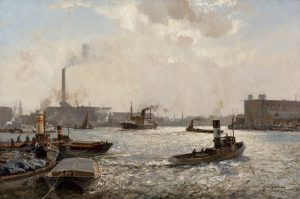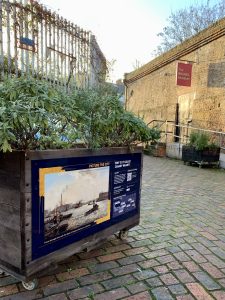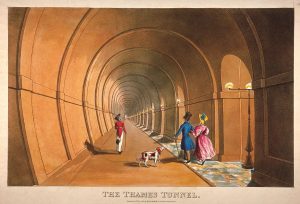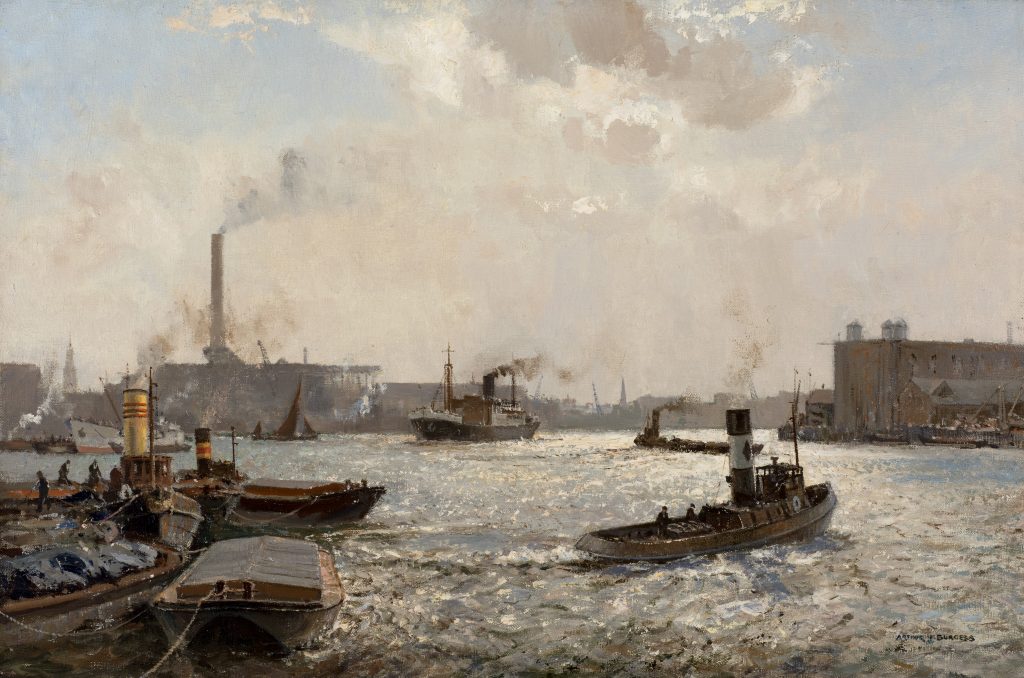To mark the final few weeks of Picture The City, Kirsty Parsons, Curator Bank of England Museum, reflects on what makes the Docklands so fascinating.
The Docklands is an often overlooked part of London’s history. Today it is the centre of London’s second financial district, with the skyscrapers of Canary Wharf dominating the skyline. Historically it was London’s trade and warehousing centre.
In our digital exhibition Picture the City, we couldn’t leave out such an important site in London’s industrial, social and financial history. Especially as it covers almost nine square miles and five London boroughs!

Lower Thames and Limehouse Reach (1940) by Arthur Burgess (1879–1957). Bank of England Museum
In the Bank of England Museum’s collection, we have a painting showing dock workers loading cargo at Limehouse Reach in 1940. Limehouse takes its name from the limekilns that operated there, producing quicklime for the building industry, but from the late-1500s it was a place of shipbuilding and rope making.

Picture the City outside the Brunel Museum
You may be asking yourself, how does this relate to the Brunel Museum? Well, these shipyards also spread to Rotherhithe, cementing the areas’ long history as a port. There were working docks in Rotherhithe until the 1970s. Because of this, we think this is the perfect place to host one of our Picture the City signs, bringing history, and our art collection, to the streets of London.
By the end of the 1700s, the docks in east London saw millions of tonnes of goods passing through each year. The docks could get so busy that ships would have to wait weeks just to drop off their cargo! With goods at risk of perishing or being stolen, it was decided to develop the area and the Docklands was born. The expansion meant bigger ships, and more of them, could load and unload goods. This helped Britain become a key player internationally, including in the triangular trade, part of the transatlantic slave trade.

The Thames Tunnel
With more and more people working and living in the area, other developments were encouraged including the Thames Tunnel. Designed by Marc Isambard Brunel, it was initially supposed to help transport cargo. When it was finished in 1843, it actually provided a pedestrian crossing under the river, before being converted for railway use.
During the Second World War over 2,000 bombs were dropped in the Docklands during bombing raids. This and the switch to enormous container ships in the 1970s, saw the area decline.
Now the area is largely residential, but with improved transport links, cultural venues like the Excel Centre and the financial district of Canary Wharf the Docklands is reclaiming its status as a key player in London’s economy.
You can see Arthur Burgess’ Lower Thames and Limehouse Reach outside the Brunel Museum until 20 March.

